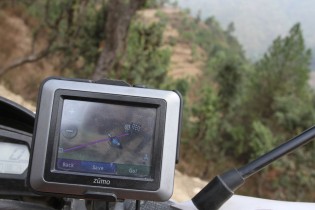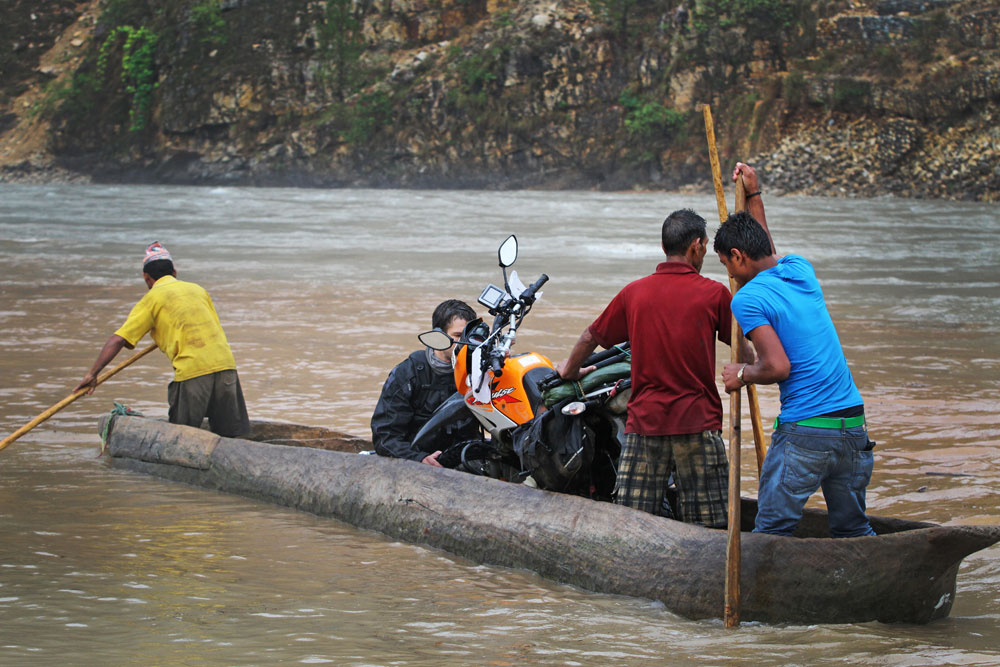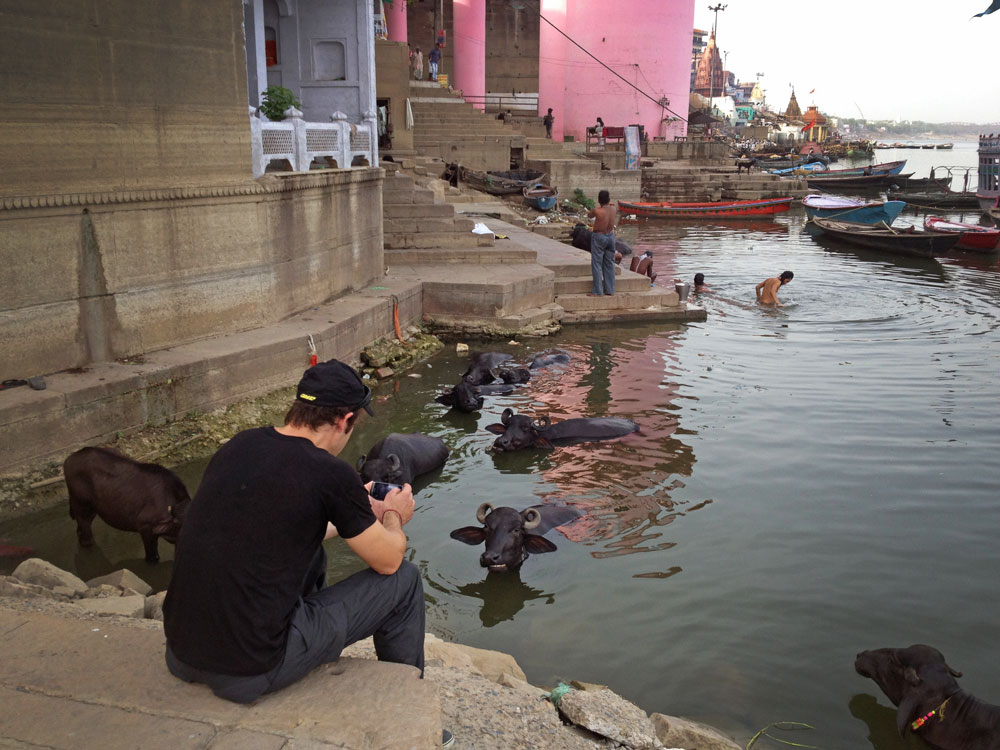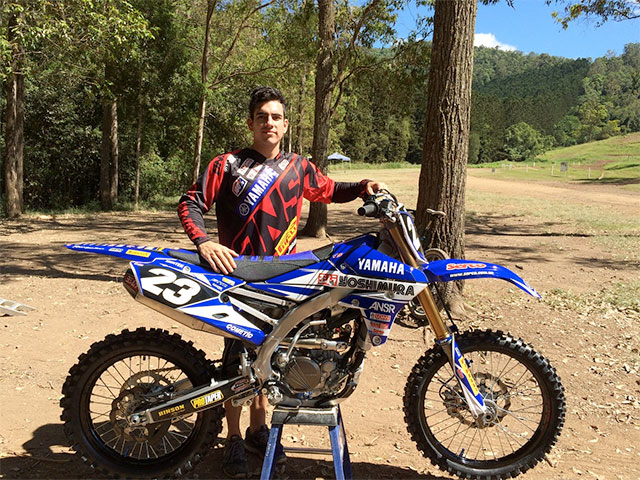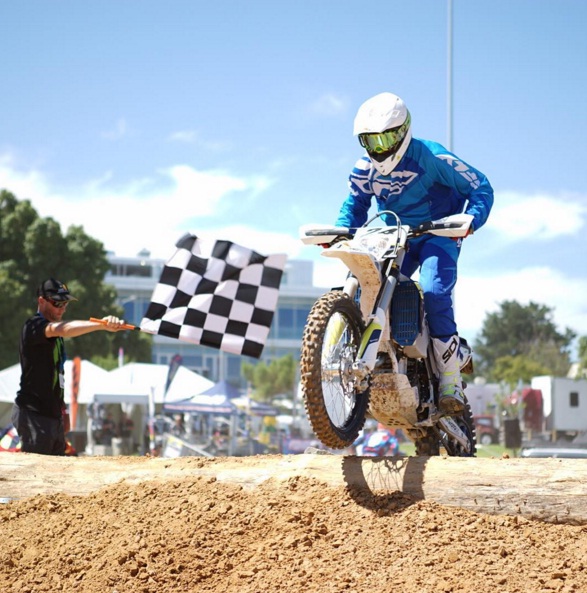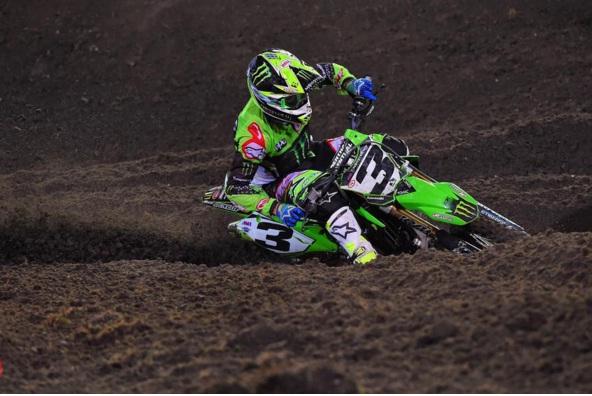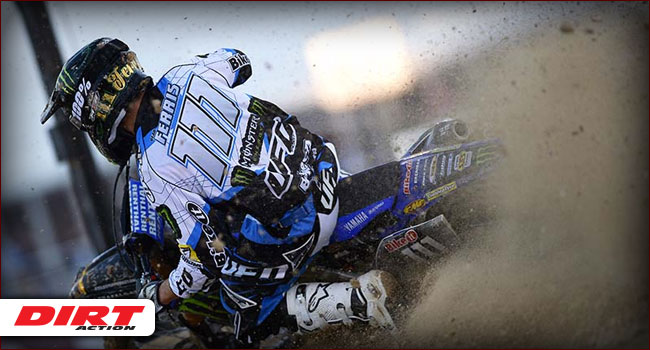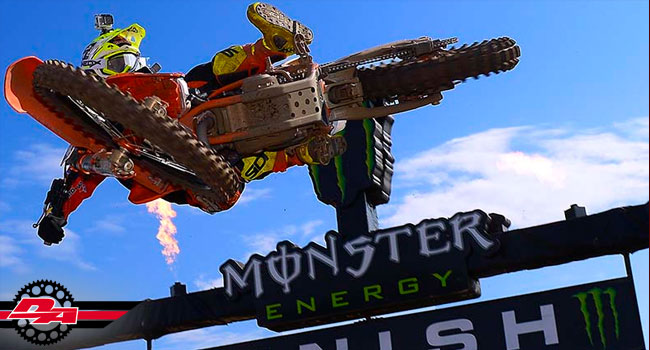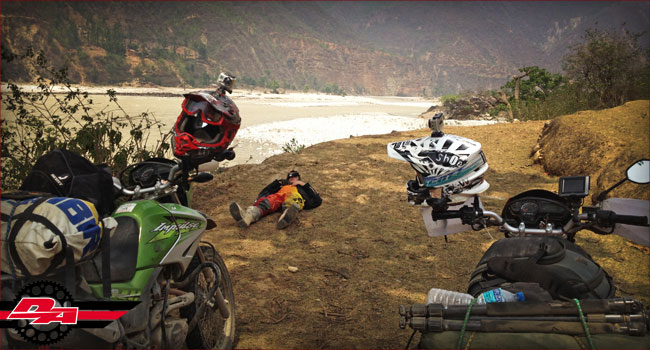
JOURNEY TO THE CITY OF THE DEAD
Lost in the mountains of Nepal, escaping torrential floods and crumbling mountain trails, Riemann is befriended by village children, rides himself to sleep on a cliff-top road and experiences a place where people go to die.
WORDS AND PHOTOS ADAM RIEMANN

Waking on a bed of leaves pressed into a jagged rock floor, I roll out from beneath the suspended canvas tarp, taking in the morning air and calming sounds of the raging river below our cliff-top vista. Seated on a platform of rocks levelling our humble accommodation, I begin the ritual of cladding myself in riding gear.
The two-wheeled mules to my left show the wear and tear of an 1800km Himalayan adventure I’ve already endured with my father. To my right is a rustle of activity from the Indian sapphire miners who’ve provided our night’s accommodation. With a few hand gestures toward his mouth, the captain of the mining team signals that our breakfast of chapati and chai tea is ready.
Relishing the offerings from people who speak no English, surrounded by cliffs stretching to the clouds, I feel I’ll never look at life the same again. If our journey were to end now, I know Dad and I have already experienced the adventure of a lifetime.
But it’s far from over.
THE MALARIA SHACK
More conditioned to extremes, we leave the miners’ company and resume travel through the majestic and treacherous ravine toward Rohtang Pass, the completion of our 2000km ride into this Himalayan wonderland. The next four days of travel are slowed by a couple of flat tyres on Dad’s bike as we venture underneath India’s canopy of smog. The heat and humidity are all consuming, so we make an on-the-fly decision to short-cut through the mountains of Nepal before heading back down into India’s northeast to our final destination: the city of Varanasi.
The process of checking in through two customs offices on a border separated by a kilometre of no-man’s-land is testing our patience. The luxury of map network is again void, as I’ve not previously downloaded Nepal data into the GPS. Another five minutes into Nepal and I’m repairing yet another flat tyre on the ol’ man’s bike. Soaking with sweat as the last edge of tyre beads onto the rim, I borrow an air line from a rickety old compressor in a bicycle repair shack.
Two kilometres later we find a roadside “resort” that has all the comforts of a small alfresco dining shed and rooms resembling prison cells. A young chef appears with a flapping rooster strapped to his bike. He has it necked, gutted and plucked in less than two minutes. It’s fresh, but not the most enjoyable meal. Eight hours later I’ve not had a wink of sleep, turning like a rotisserie to provide fresh blood for the mosquitoes biting me incessantly through the night. I can feel my body getting lumpier by the hour but am too restless to care that malaria is probably settling into my bloodstream.
As the faint glow of morning pierces the room, I jump off the bed in a fit of frustration and yell, “Let’s get the f**k out of this place!” Dad wakes in a fright, dulled by a deep slumber, and hasn’t a single mosquito bite on his body.
In record time, the gearing-up ritual is complete and we’re on the road to anywhere. Ten minutes into the ride and I’m a dazed zombie; I just want to lie in the dirt and sleep. Still in range of India’s phone network, we’re able to pinpoint our location on Dad’s iPhone, which I use to cross-reference waypoints on my GPS and set a course.
LETHAL LULLABY
By map, there’s about a 500km highway loop heading up into the mountains which drops back down where we need to cross into India. On the Google Earth iPhone map there’s another track which looks like a good off-road short-cut to the mountain highway.
This is the wake-up I need as the dirt road becomes rocky and rutted, forcing me to concentrate. There’s no sign of civilisation for a while but the track is dry and pulverised into bulldust from traffic. I backtrack intermittently to ensure Dad is still on two wheels and we’re still heading towards our waypoint. Unwelcome stares from villagers with machetes and shovels prompt us to keep moving through an isolated village in the clouds.
A prominent kink in the trail heading east suggests we’re on the right track, which meanders through a valley of rice fields and villages. An hour later, the track butts into a bitumen road — my interpolations on the GPS are working well. We stop at a roadside kitchen and are fed lunch until we can no longer eat. In Nepal, whatever dish you order will be continually slapped onto your plate until you decide you’ve had enough.
Pressing on for another 80km of winding mountain roads toward a little town called Pipalla Doti, I’m beyond fatigued, having not slept for more than 30 hours. I really shouldn’t be riding but I figure it’s impossible to fall asleep on a bike. I’m wrong. The combination of the meandering road, warm wind and a 150cc lullaby-machine is coaxing me into a dreamy state. The winding river view from the cliff edge is mesmerising as my thought process shifts to the subconscious. It’s like I’m falling asleep in front of a TV.
The road peels to the right then switches back onto the opposing mountainside. There’s another bike heading towards the apex, but instead of alerting my senses to prepare for the turn, I focus on the bike like it’s a dream … and nod off. Whoohhh, shit! I snap out of it and erratically wobble into the turn like I’ve been teleported from a bed onto a moving bike. The sensory shock is like a kick in the face. Of all the dangerous situations I’d been in over the past 2000km, this is by far the worst.
I pull over at the next available slope and ride down under a tree. Dad enjoys the view of buffalos bathing in the river while I pass out in the dirt like I’m drifting away on a cloud.
THE ELUSIVE FUEL
Later, arriving in Pipalla, some much-needed rest also gives time to map out the remaining 300km to the Indian border. Accuracy is critical, given we’re still on the same tank of fuel from the day before and are yet to find a bowser. The problem is, the main highway we’re following is not a highway at all — it’s a wet, rocky, rutted 4WD track rising into the clouds. My interpolation on the GPS topographical image isn’t ideal given there’s several adjoining tracks to choose from every 30km or so. We simply don’t have the fuel to accommodate any wrong turns or backtracking.
Riding higher into the wet mountains, Dad is struggling to maintain any pace. It seems like hours since we left Pipala Doti but we’ve barely travelled anywhere. Cruising past a small village, I notice a bunker perched on a hill with three soldiers in it. I ask for some directions while they check my passport. They do their best to communicate the whereabouts of the next fuel stop, which is 80km away. We’d easily make the distance by road, but the muddy tracks and steep climbs are burning more fuel.
Continuing on, it seems we’re headed in the right direction. To this point, I’ve gone by feel through split tracks and forks in the trail without really knowing I’m on the right one, but the GPS pointer is still on target to where I think we need to be. Everything is guesswork. Weaving through sloppy trail, I ride up into the clouds through another small village. There’s a bike and a group of people huddled down in a shack, so I ask if they know where the nearest fuel is. Convinced it’s further ahead — along with the road off this mountain — I’m pointing beyond the village and expecting them to tell me to keep going. “No! No fuel, no India border. This way nowhere!”
Meanwhile, Dad rides past. I scramble for my helmet and charge off in the direction we’ve been told not to go. The track is slippery and rough and I’m bashing the 150 through washouts to catch Dad. I bounce the bike past him, spin a U-turn and tell him I’ve screwed up and we’re off course. As we ride back through the village, three soldiers curious about the commotion approach me with a grip on their guns. Thankfully, one of them understands enough English to hear me out and waves us out of their town as if it’s a warning not to come back.
In the confusion, I’ve ascertained there’s a turnoff 8km back that I’ve missed, followed by a 25km ride to the next fuel. I set my trip meter and ride exactly that distance in search of a track to the right. Sure enough, it’s a little village with a fork road in the centre. Dad finally arrives with — you guessed it — another flat.
Kneeling in the muddy main street, I’m fitting our last spare tube (which is a front tube) into Dad’s rear wheel as the entire village population watches. We’re now back on track and have confirmed there’s fuel 25km ahead. I’ve long switched the fuel tap to reserve and am riding with absolute efficiency, albeit keeping high gears and barely backing off for turns. I’ll find this fuel first, worry about Dad later.
I smash the 150 into a washout with way too much speed and get pitched into an ugly slide. The balding trail tyres have no say in the matter as I’m crossed up and skiing toward the wall of dirt cut into the mountain. It’s like wrestling a wild animal. The bike deflects off the wall and back across the trail towards a very big freefall. A split-second reaction to open the throttle — instead of bailing out — results in a graceful slide along the greasy edge of the cliff-side trail. With military discipline, I don’t give it another thought but resume focus on the job at hand and continue the search for fuel.
THE THREAT OF MARRIAGE
Rolling into a scattered village, I wipe the rain off my goggles and scan for a fuel bowser. Where is the bloody thing?
I ride further past smoky shacks packed with locals peering out into the rain. I’m pointing at my tank as a gesture for fuel, then seven hands point back in the reverse direction. I see a few locals waving me up a trail that tapers to about a 45-degree slope. I pause at the base, wait for Dad to eventually come into view, then pull a motocross start up the trail, lobbing the bike up over the crest and into the centre of a bustling little Nepalese village.
In seconds I’m mobbed by children but there’s still no sign of fuel. A crafty little 12-year-old promptly asks me, “You like Nepalese girl, yes? You marry and live in our village?”
By the time Dad finally gets up the hill, my bike is being filled from a watering can which is decanting fuel from plastic drums alongside bags of rice in a little store.
Amid the melee of Nepalese kids and villagers, a stern-looking dude gets my attention and says, “Danger travel now! You eat, sleep … in morning you go!” Animating his gesture with a serious look and a finger pointing beyond the village, I get the immediate feeling he’s not happy with our presence among their women. A bucket of water for a bath and a hessian mat in a stone cabin is our accommodation for the night. This is Binayak — an unforgettable town for obvious reasons.
DON’T PAY THE FERRYMAN
Onto the slippery trail at first light, we descend into a misty valley. Already warned of a ferry crossing, I ride the trail to its end and continue alongside a raging, 200m-wide river.
In the mist I can see a canoe silhouette near a rider parked on the bank. Turns out it’s a former Nepalese congressman who’s doubling his wife into the mountains. He speaks English well and ensures we pay local price for the canoe ferry, which is simply a hollowed-out tree. The ferrymen make themselves scarce in the rain, but we need to get moving. Dad pays the ferryman in his riverside shack, then I step into the torrent and drag their canoe up river to load my bike on.
They see I’m desperate to move. One by one they help lift my bike into this wobbling length of hollowed-out wood. It’s about as stable as a kid balancing on a school chair, so I’m wondering how it’s going to get us all across without tipping over. They don’t use oars; they’d be useless against the torrent. Instead, they jam long poles into the riverbed to push us along. Halfway through the crossing, a ferryman says, “One bike, one thousand.” I ignore him, knowing he’s trying to renegotiate his own price now I’m at their mercy. We reach the other side, I look the dude in the eye, remind him we’ve already agreed and pay one thousand rupee for two bikes.
They disappear into the mist and completely bypass Dad. I can’t believe it; they’re going to renege on Dad’s ride and leave us separated by the river. Thankfully, the congressman hasn’t left the ferrymen’s shack, which prompts the men to come good on the deal. However, they finally deliver Dad across river, then push off with the last laugh: over the next bank is another stream that’s washed the road away. You bastards!
There’s a rideable entry into the stream, left of where the road enters. I walk through first and the base feels fine, but the water pressure at knee height is enough to wash a bike into the river if I tip over. Anyway, I ride both bikes through without ordeal and with a sigh of relief we’re on our way toward the Indian border. Or are we?
RIVER RAGE
Ten kilometres on, the muddy trail meanders to a village huddled in the valley of another raging river. Rain has turned the once passable crossing into a treacherous floodway.
Before I can get my helmet off, a rough, scar-faced villager approaches and says, “Four thousand rupee, many men lift bike.” I don’t know if we even have that amount, so I ignore him and walk into the torrent. With every step I take, the audience of villagers is screaming in symphony, “Stop, no, danger!” I’m barely up to my knees and the water pressure is trying to tip me over.
A kid runs up, throws a rock into the middle of the torrent, then with hands held above his head shouts, “Deep, deep!” He points down river to a half-constructed bridge and yells, “Look, full!” I know what he means — this is our only way across.
I ride down a passage of shacks between chooks and cows. At the end is a small path leading up to a mound of dirt at the base of a concrete footing. There’s a wooden ladder leaning against the bridge pillar. I back the 150 into an old woman’s kitchen shack to get enough run up onto the greasy dirt mound. As the rain continues to pour, I’m adamant in getting the bikes up and over the bridge. With all our strength, Dad and I struggle for 15 minutes. We manage to get my bike up one rung, but simply don’t have the strength to get it higher up the ladder. It’s hopeless.
The scar-faced man steps out into the rain, puts up three fingers and says, “Three thousand, two bikes.” Sitting halfway up the ladder, sodden from the pissing rain, I stare at the dude in anger and yell, “How ’bout some f**king help?”
All the villagers are poised under surrounding shacks, some of them wanting to jump in and help, but it’s clear they’re under the control of this dodgy dictator. Dad calms me down and gives the all-clear for the villagers to take over. The dodgy dictator clicks his fingers and, within seconds, 15 men swarm the bike and elevate it up the ladder like worker ants.
THE CITY OF DEATH
The river crossing ordeals are a kind of bittersweet end to our experience of Nepal but an insight into raw village culture nonetheless. All that remains now is a 400km journey south through India toward our final destination of Varanasi.
Networks of industrial junkyards and streetside poverty are all too familiar as we’re once again pushing through the urban bowels. This is India, the real India, but for just a fleeting moment, something amazing comes into view: there, across a river at the end of bridge, stands the amazing city of Ayodhya. It looks like a city of dignity, filled with iconic Indian architecture and temples I’ve only seen in movies. It’s everything I’ve ever imagined a real Indian city to be.
Then my stomach turns. I slowly come into range of what is just the skeleton of an ancient city, consumed by the fungus of street life, squatters and poverty cascading through its ruins. Feral monkeys are scavenging through rubbish piled against decaying temples that were once homes of powerful people. It’s shocking, and it saddens me to think such a beautiful place has been destroyed by its own uncontrollable humanity.
Having survived 4500km of near misses with trucks, goats, cows, dogs, people and countless cliff-edges, we begin a slow penetration into Varanasi’s core. Like two rats stuck in an impossible labyrinth, we thread through thousands of humans packed into a network of streets and alleys lined with ancient temples and buildings morphed into homesteads or restaurants. The haunting sight of a monkey perched on a derelict traffic light symbolises an attempt at modern infrastructure that’s been overcome by an unstoppable population. This is Varanasi, the oldest and most religious city of India. It seems a fitting place to step off the bikes, knowing the morning ritual of gearing up and heading into the unknown is finally over.
The past 21 days have taught me lessons of life; lessons you can’t read about or see on TV. Lessons I’ll continue to learn from until the end of life itself — which, strangely enough, is all around us. We walk to the banks of the River Ganges, a great body of water stemming from the Himalayas. It winds through India like a large intestine, flushing tonnes of effluent, rubbish, carcasses and corpses down into the Bay of Bengal. We become witness to one of Varanasi’s sacred ghats: a holy stairway descending into the Ganges, strewn with log fires that are stoked continuously, day and night. People from all over India bring the deceased here to be cremated while some make the journey themselves knowing they’re soon to die. It’s a moving experience as we watch from a stone hospice, blackened by the smoke of millions of corpses burnt throughout the centuries.
While the living bathe in what they believe is life-giving water, the remaining pelvic bones of a woman are pulled from the ashes and thrown into the Ganges as a final purification into the afterlife. Dead children, virgins and priests need no purification by fire, so are thrown in whole. It’s both numbing and moving to see a man with a stick stoking a fading fire containing a corpse, once the relative of a group of Indians looking on. The reality of the situation is driven home when the fire-stoker jams his stick into the charred torso, then rag-dolls the whole spine and skull over onto hotter coals. He later smashes the skull open to let the soul be taken by the divine.
I’m not sure what Dad is thinking, but after being exposed to such a tangible ending of life, I feel privileged to be alive. I feel quietly content knowing my bag of bones has been able to carry my soul through such an amazing adventure: a 4500km Himalayan motorcycle adventure!
Watch The VIDEO HERE
Read PART 1 HERE
Want more articles like this? Subscribe to Dirt Action Magazine.

